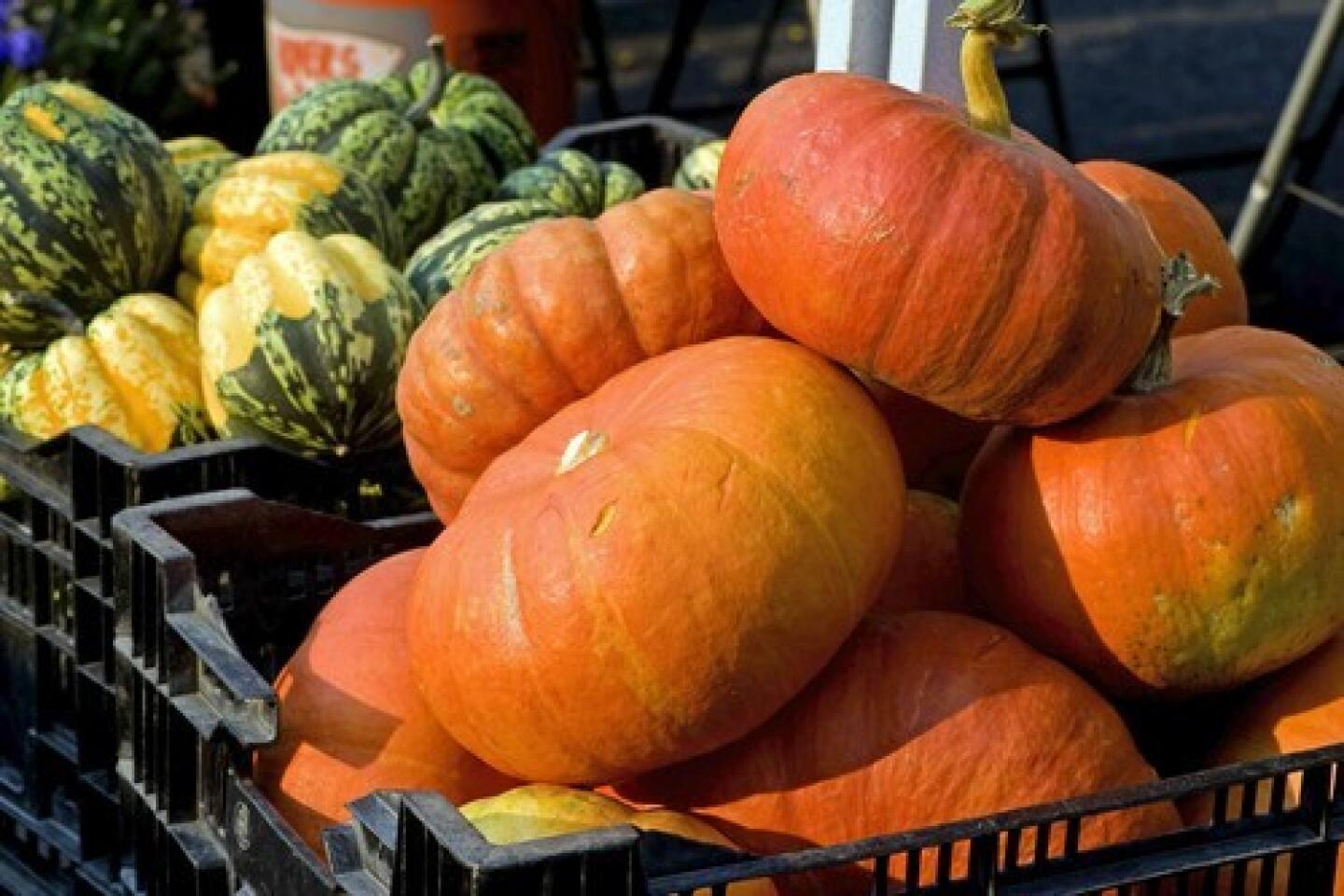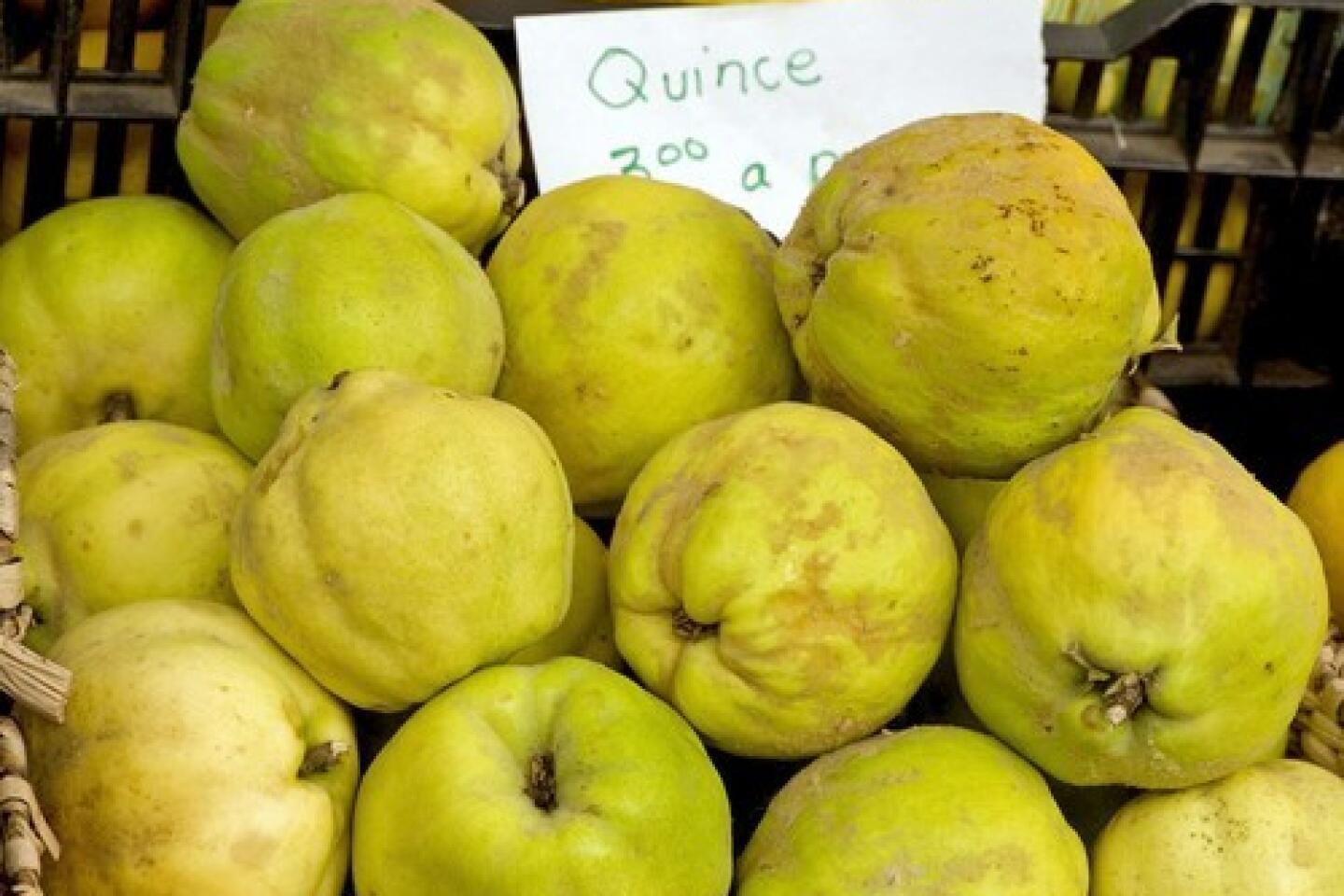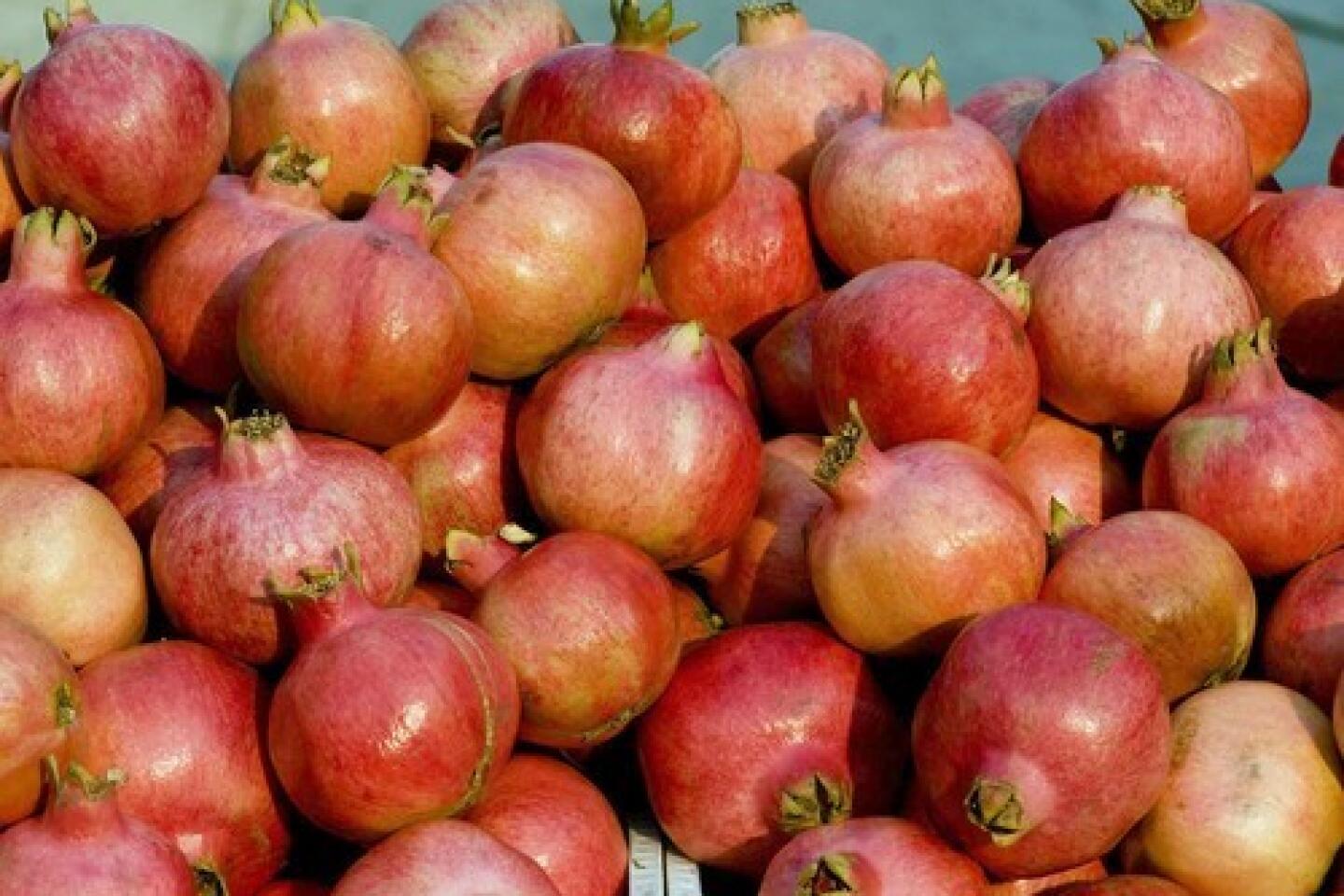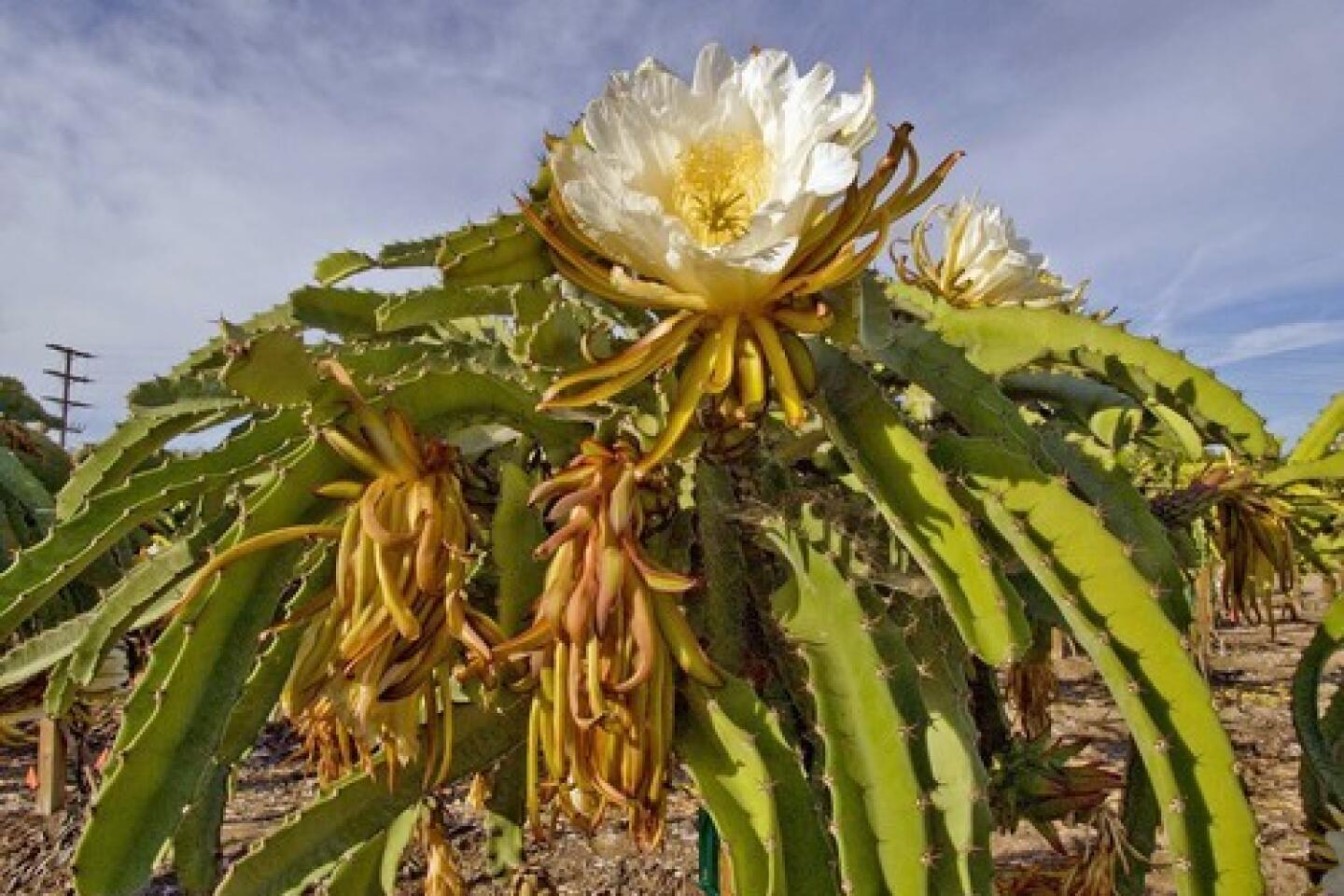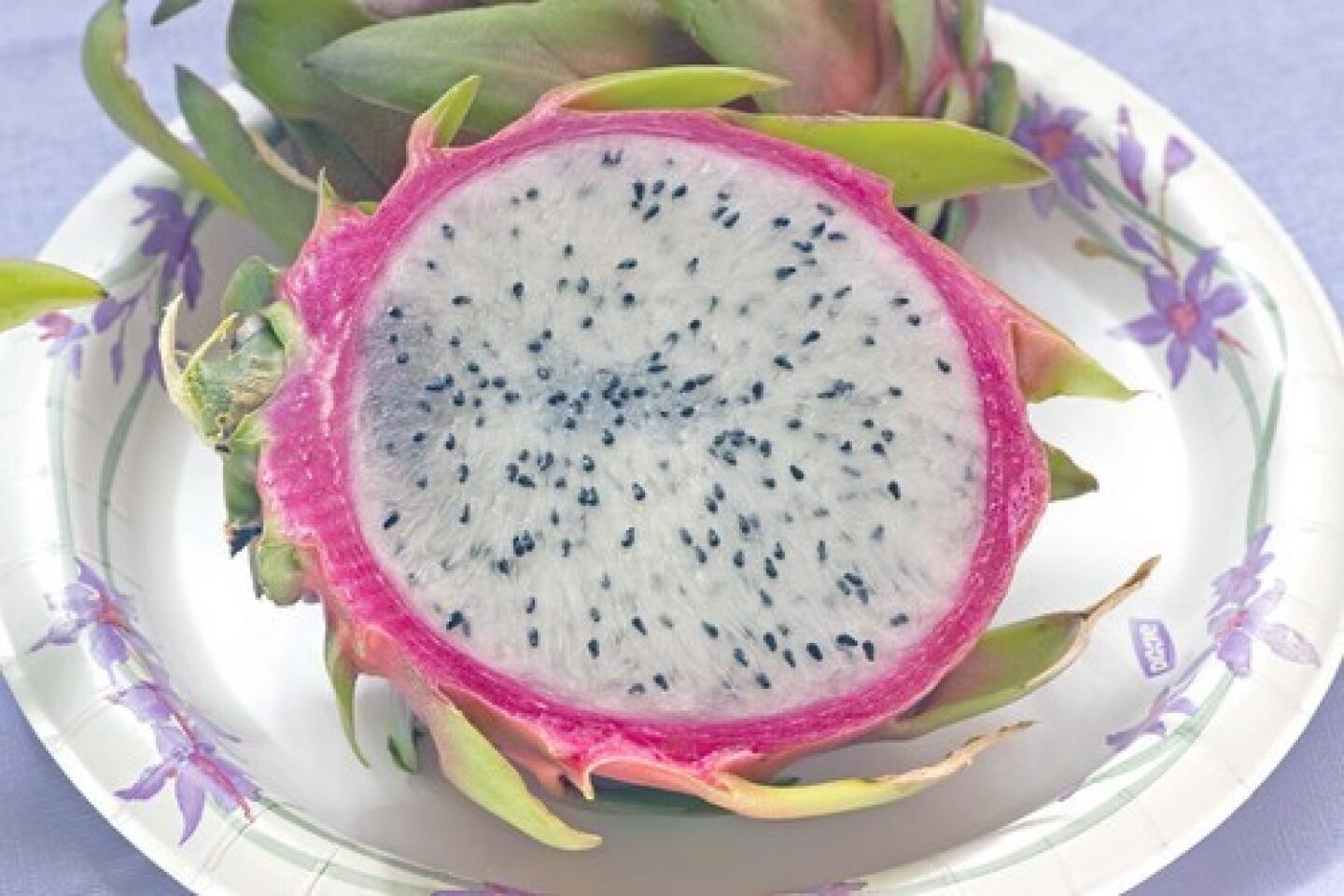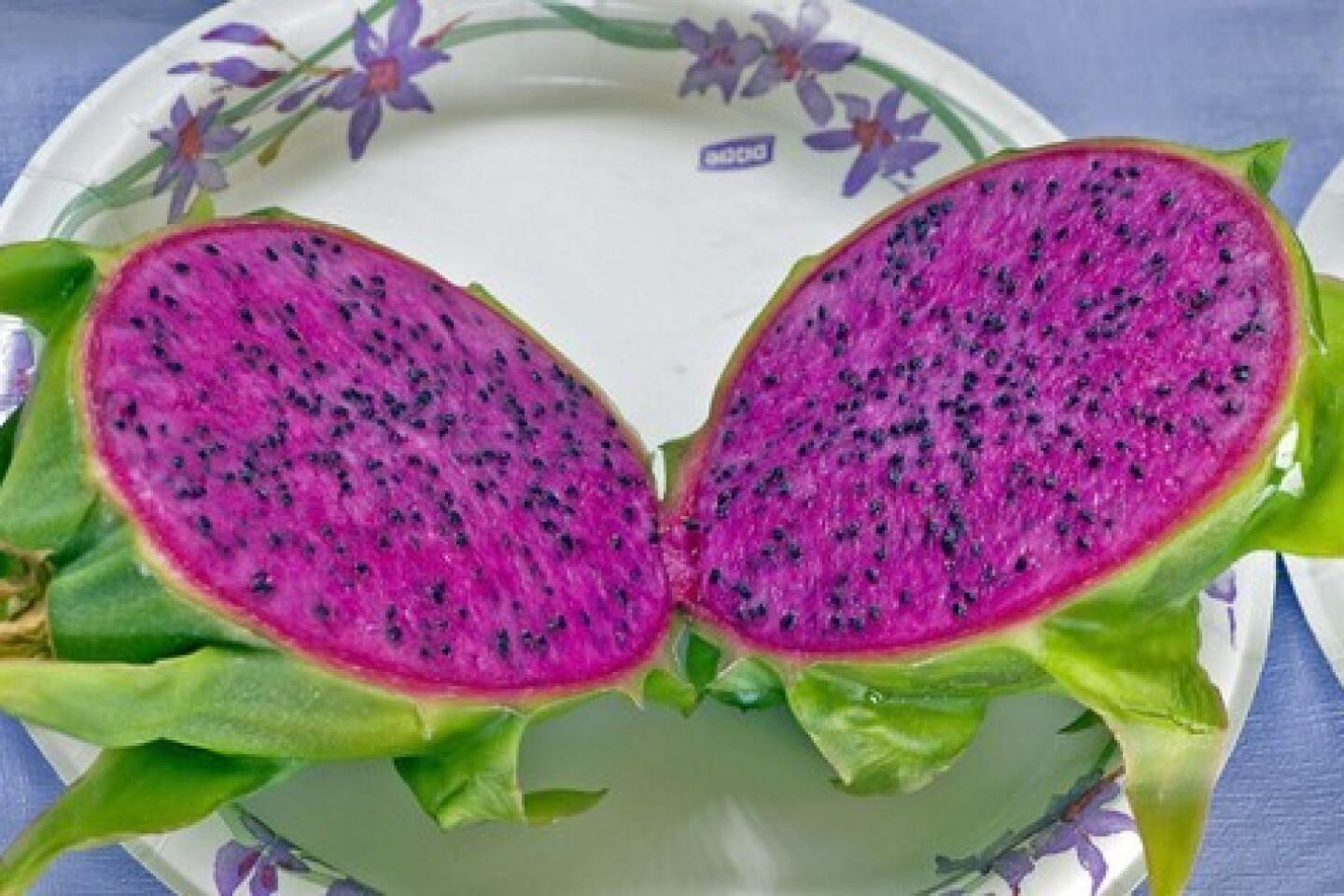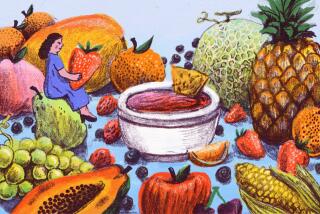Pitahaya, or dragon fruit, finds a place at SoCal farmers markets
- Share via
It’s happening at farmers markets all over Los Angeles. A shopper stops short, agape, at a table of fruits that look like artichokes from Mars, and asks the vendor, “What on Earth are they?”
“They” are flaming pink, spineless cactus fruits, with neon magenta flesh and a mild, sweet flavor, reminiscent of watermelon. They have tiny, edible black seeds, similar to a kiwi’s, which are not at all gritty, as are those in common prickly cactus pears.
They grow on climbing cacti native to the tropical forests of Mexico, Central America and parts of South America, where they are called pitahaya; in Southeast Asia, where they were brought by French colonists more than a century ago, they’re known as dragon fruit. Now grown domestically, they mostly are eaten fresh, in wedges or cut in half and scooped out with a spoon, but imported juice also is trendy, as in the recently introduced Bacardi Dragon Berry rum.
The farmers market vendor is Pedro Gallardo, 41, who was born in Aguascalientes, in central Mexico, although he never encountered pitahaya there. After immigrating to the United States he worked for the Port of Long Beach, and made enough money in real estate that he was able to acquire 21 acres of farmland, including organically grown avocados and pitahayas, in De Luz, a gorgeous agricultural area in northern San Diego County. Last year he quit his day job and devoted himself to selling these fruits at farmers markets, and he is now at more than a dozen venues.
Henri Gerwig, who sold Gallardo the pitahaya planting and still farms it, also sells commercially under his DeVine Tropical Dragonfruit label; the fruit is often available in season at local supermarkets such as Whole Foods and Gelson’s. The harvest started a month ago, and in most years peaks in September, although there’s currently a slight lull; production ends some time from November to January, depending on the advent of rain and cold weather.
Adventurous farmers started trying to grow pitahaya in California in the 1990s, and began selling fruit commercially on a small scale early this decade. Now there are close to 200 acres, estimates Ramiro Lobo, a UC Cooperative Extension farm advisor for San Diego County, who has a test planting in Irvine of 19 varieties that he is studying to see which will perform best for local farmers. Compared with avocados, pitahayas require substantially less water, an important advantage in this time of mandatory cutbacks, he said.
Last Saturday, Lobo hosted a huge turnout, 140 home gardeners and aspiring growers, for the fifth annual Pitahaya Festival and Field Day, held at the UC ANR South Coast Research and Extension Center. Visitors attended lectures, received cuttings, toured the test plot and tasted varieties.
When pitahaya cultivation began in California, most growers planted white-fleshed varieties, which were predominant in Vietnam and could be grown without hand-pollination, which was thought to be required for many of the varieties with magenta and red pulp. That’s no small matter, since the huge, showy white flowers bloom mostly at night.
“I like the red-flesh varieties because they’re sweeter, but they’re very difficult to do commercially,” said La Do, a Vietnamese American whose Do King Dragon Fruit Farm grows 25 acres of pitahaya in Escondido, producing 200,000 pounds a year -- possibly the largest planting in the state.
Now Lobo is finding that at least some red-fleshed varieties can be grown without hand-pollination. It will be crucial for repeat sales that growers select varieties with superior flavor, he said.
Edgar Valdivia, a rare-fruit enthusiast who has been a major booster of California pitahaya cultivation, encouraged growers at the festival to experiment with seedlings, which vary from their parents in fruit characteristics, so as to come up with tasty new varieties adapted to local conditions.
Pitahayas were rare and expensive when they debuted here and are still quite pricey. Eco Farms, Gerwig’s distributor, wholesales them for $4 or $5 a pound, and retail prices easily are twice that. At farmers markets, Gallardo and his workers sell pitahaya for $4 to $7 a pound, depending on size and quality.
Prices may decline in the face of increasing competition, both domestic and international. In the last decade Florida growers have also put in about 200 acres of pitahaya, and wholesale prices are lower than in California, about $1.50 to $4 a pound, said Roger Washington of Red Dragon Fruit Co., based in Redland, Fla.
Last year the U.S. Department of Agriculture permitted Vietnam, which grows more than 33,000 acres of pitahaya, to export the fruit, treated with irradiation to kill or sterilize fruit flies, to this country. However, the shelf life of pitahaya is only about two weeks under optimal conditions, so for fruit to arrive in good condition, it needs to be flown, which erases much of the cost advantage.
Serious competition may come some day from Mexico, which currently grows about 5,000 acres of pitahaya, and has for several years been permitted to export it from fruit-fly-free districts to the U.S. Most of the plantings currently are not in such areas, but if that changes, the fruit may become as common as mangoes here.
Pedro Gallardo (Pedro’s Ranch) sells at these farmers markets: Hermosa Beach (Fri.); Huntington Beach (Fri.); Cerritos (Sat.); Santa Monica (Sat. Organic and Wed.); Torrance (Sat. and Tues.); Hollywood (Sun.); Montrose (Sun.); Silver Lake (Sun.); Manhattan Beach (Tues.); Huntington Park (Wed.). For locations and times, see the Los Angeles Times farmers market map.
More to Read
Eat your way across L.A.
Get our weekly Tasting Notes newsletter for reviews, news and more.
You may occasionally receive promotional content from the Los Angeles Times.
